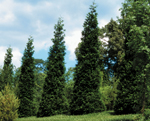‘Green Giant’ Stands Tall Among Evergreens
go.ncsu.edu/readext?236393
en Español / em Português
El inglés es el idioma de control de esta página. En la medida en que haya algún conflicto entre la traducción al inglés y la traducción, el inglés prevalece.
Al hacer clic en el enlace de traducción se activa un servicio de traducción gratuito para convertir la página al español. Al igual que con cualquier traducción por Internet, la conversión no es sensible al contexto y puede que no traduzca el texto en su significado original. NC State Extension no garantiza la exactitud del texto traducido. Por favor, tenga en cuenta que algunas aplicaciones y/o servicios pueden no funcionar como se espera cuando se traducen.
Português
Inglês é o idioma de controle desta página. Na medida que haja algum conflito entre o texto original em Inglês e a tradução, o Inglês prevalece.
Ao clicar no link de tradução, um serviço gratuito de tradução será ativado para converter a página para o Português. Como em qualquer tradução pela internet, a conversão não é sensivel ao contexto e pode não ocorrer a tradução para o significado orginal. O serviço de Extensão da Carolina do Norte (NC State Extension) não garante a exatidão do texto traduzido. Por favor, observe que algumas funções ou serviços podem não funcionar como esperado após a tradução.
English
English is the controlling language of this page. To the extent there is any conflict between the English text and the translation, English controls.
Clicking on the translation link activates a free translation service to convert the page to Spanish. As with any Internet translation, the conversion is not context-sensitive and may not translate the text to its original meaning. NC State Extension does not guarantee the accuracy of the translated text. Please note that some applications and/or services may not function as expected when translated.
Collapse ▲
‘Green Giant’
All photos by Todd Lasseigne
Thuja plicata ‘Green Giant’ is a vigorously growing, pyramidal evergreen with rich green color. The genus is more commonly referred to as arborvitae, which is known for its lustrous dark green leaves in summer with a bit of bronzing in winter months. ‘Green Giant’ has the added feature of a faint white streak on the bottoms of leaves, giving the entire tree a slight but noticeable accent of color.
This cultivar has been available in the U.S. for 30 years, having been imported from Denmark. While ‘Green Giant’ is not a big seller for North Carolina nurseries, it is gaining in popularity as an excellent substitute for Leyland cypress. Many lower growing cultivars also are available and make good landscape additions.
Mature specimens can grow to 40’ tall with an 8’ spread so be sure to give them plenty of room. ‘Green Giant’ is best used in multiple plantings to create a living frame for your landscape, lending a feeling of formality to the garden. The frame also may function as a screen to create more privacy when planted in rows. If not a frame, then ‘Green Giant’ is also effective as a single specimen that functions as an evergreen sentinel.

‘Green Giant’
All photos by Todd Lasseigne
‘Green Giant’, as well as most of its relatives, is not troubled by any significant insect pest or disease problems. It tolerates a wide range of soil types and hardiness zones. Because of its popularity in the Pacific Northwest, few gardeners realize that it has great potential for landscape use in North Carolina. Growth rates of 2- to 4-feet per year have been reported at the JC Raulston Arboretum (JCRA) in Raleigh, making ‘Green Giant’ a plant with many favorable characteristics.
Visit the JCRA to see this plant and other arborvitae cultivars. While there, visit the new education center. To learn more about upcoming speakers and other educational offerings at the JCRA, visit jcra.ncsu.edu.
Carl Matyac


